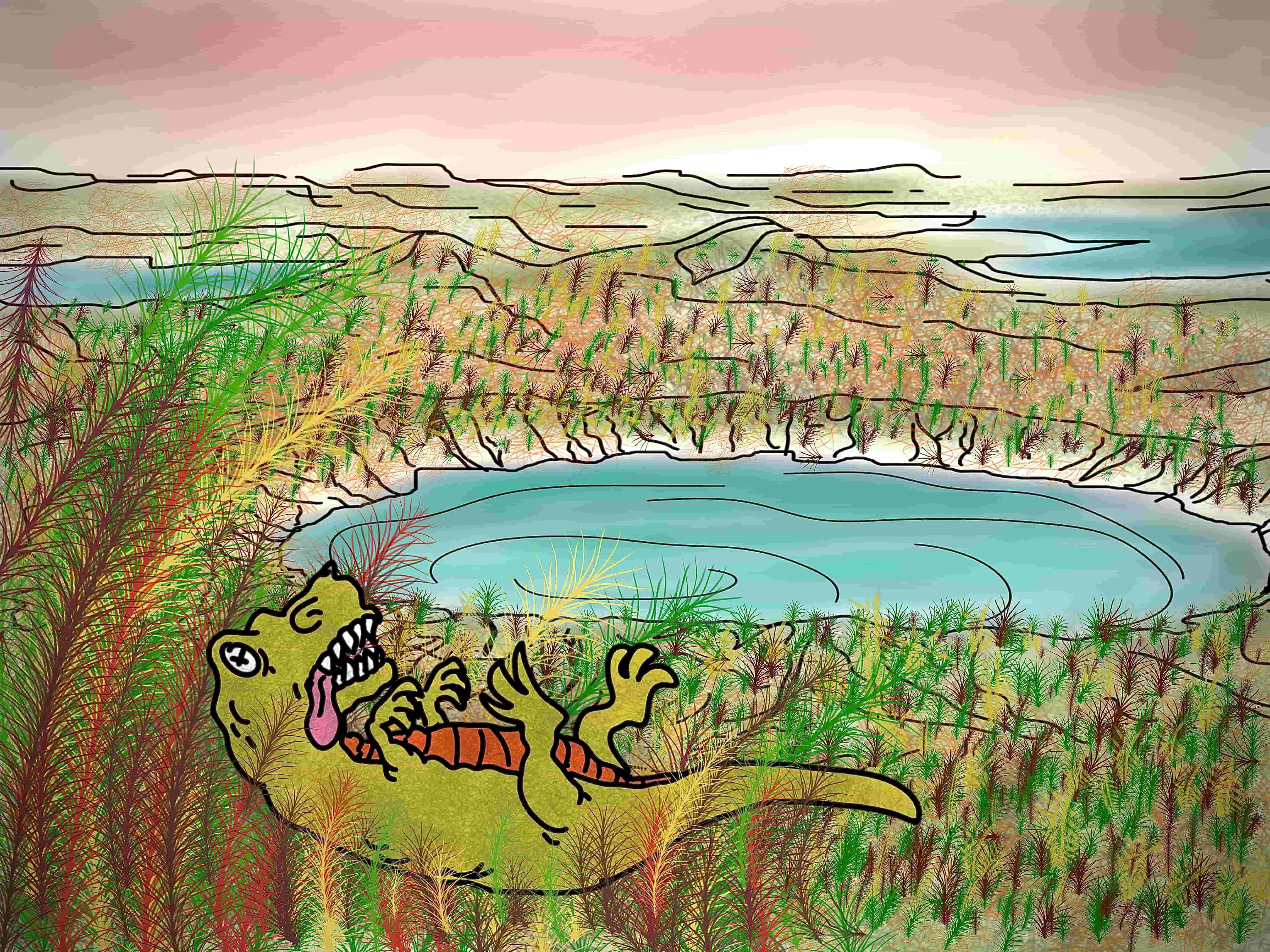As tropical forests are cleared for agriculture and coral reefs overheat from rising temperatures, thousands of species vanish into oblivion, unable to survive the rapid climatic and environmental changes of the Anthropocene—the age of the sixth mass extinction. The Anthropocene epoch is an unofficial unit of geological time used to describe the current historical period where human activities have massive climatic and ecological ramifications.
To fully understand the current climate crisis, we must turn to the Earth’s last mass extinction: The Cretaceous-Paleogene period. The environmental changes of the asteroid impact that caused this extinction have long been an enigma. However, the mystery has finally started to be unveiled.
In a new study published in Paleogeography, Paleoclimatology, Paleoecology, a group of McGill researchers shed light on this mystery by exploring the secrets buried inside Canadian rocks. To examine how the dinosaur extinction transformed the surrounding environment, the team extracted plant wax samples from river sediments in southern Saskatchewan.
“Plant waxes are small molecules found on the surface of plant leaves. They help protect plants from being dried out,” Dr. Peter Douglas, an assistant professor in McGill’s Department of Earth and Planetary Sciences, wrote in an email to The McGill Tribune. “They are useful to geologists because when they are washed into sediments in rivers, lakes, and the ocean, [where] they can be preserved there for millions of years. They are like molecular fossils that we can dig up and examine later.”
The researchers extracted samples spanning the Cretaceous-Paleogene boundary, the time period between when dinosaurs were alive and after they went extinct.
These plant wax samples allowed scientists to reconstruct changes to plant ecology as well as carbon and water cycling within this timeframe. The researchers estimated the precipitation and vegetation patterns of the era by measuring the ratios of carbon and hydrogen isotopes.
The team found that local ecosystems and plant communities experienced a long-term shift from aquatic to terrestrial plants. They speculated that this shift was due to the extinction of large plant-eating dinosaurs, allowing terrestrial plants to expand their reach unchecked on land. The changes in precipitation patterns, which were found to be relatively minor and short-lived, could possibly be due to changes in either vegetation or isotopic fractionation related to soil evaporation and transpiration.
Overall, these findings have significant implications for the future of paleontology and add to knowledge on the Cretaceous-Paleogene extinction.
“I think coupling these kinds of molecular methods with traditional paleontology has a lot of promise for better understanding how environmental changes were linked to the extinction of different species,” Douglas wrote.
Despite its focus on the past, the study has important implications for the present.
“Trying to understand future changes in precipitation is a really important goal of climate science, and looking at past changes of precipitation when the Earth was warming or cooling can help us better understand this,” Douglas wrote.
While the past might help in understanding the world today, it is important to remember that a direct comparison cannot be drawn between the Cretaceous-Paleogene extinction event and the ongoing Anthropocene extinction.
These insights can help determine the ways in which current climatic changes might alter precipitation patterns and affect ecosystems. For example, changes in precipitation levels, like droughts, can be very harmful to wildlife. Additionally, the study can also shed light on how the disappearance of large herbivores like zebras might affect the health of our ecosystems.
“Our results are also consistent with a lot of other research that shows extinction of large herbivores can cause big changes in plant ecology,” Douglas wrote. “This could have implications for the widespread extinctions happening on Earth now, which will likely have important effects on present-day plant ecology.”






